Blink, and you’ll miss it; Fitzrovia Chapel is situated in leafy Pearson Square, bang in the centre of the Fitzroy Place development. Within its four walls lies a deep and rich history making it one of the finest hidden gems in London.
Words by John Rogers
From hospital chapel to avoiding demolition, and from closure to reopening as a privately owned exhibition space, come with us as we explore the secrets of one of London’s most beautiful 19th Century buildings, Fitzrovia Chapel.
Why Visit Fitzrovia Chapel?
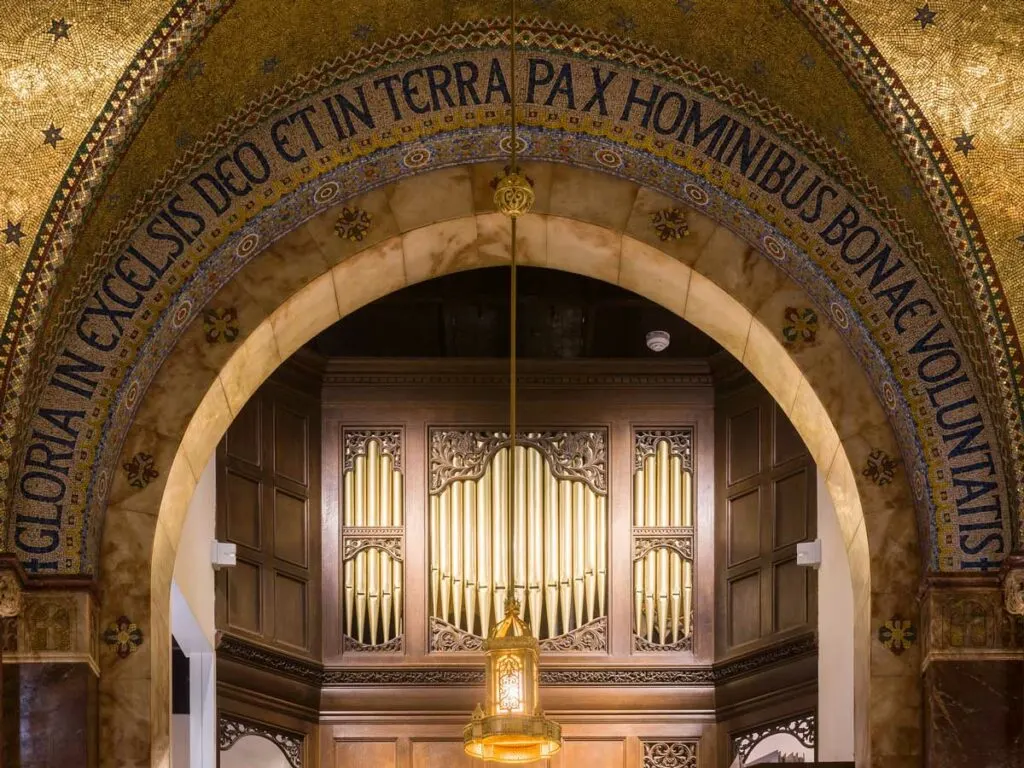
Today, Fitzrovia Chapel is one of London’s finest examples of Gothic revivalist architecture. This Grade II-listed chapel used to be the place of worship of the Middlesex Hospital, which occupied the site until the late noughties.
Although never officially consecrated, the site remains a place where people can enter and take time to reflect, taking in the bright and airy interior and pondering over the rich colours of the stunning stained glass windows.
Exhibitions + Meditation
The chapel is open every Wednesday for public exploration between 11 am and 5 pm. It is also a regularly used exhibition space, housing some of the finest artistic displays in the city.
Other events that take place in the chapel include meditation sessions and being available to hire for special occasions such as weddings and to host corporate functions.
An Impressive Renovation
Fitzrovia Chapel underwent a complete restoration between 2013 and 2015, with the result being a beautiful lasting testament to the rich history of the Middlesex Hospital and the unrivalled Gothic revivalist era that has left a lasting legacy of beauty across the City of London.
The History of Fitzrovia Chapel
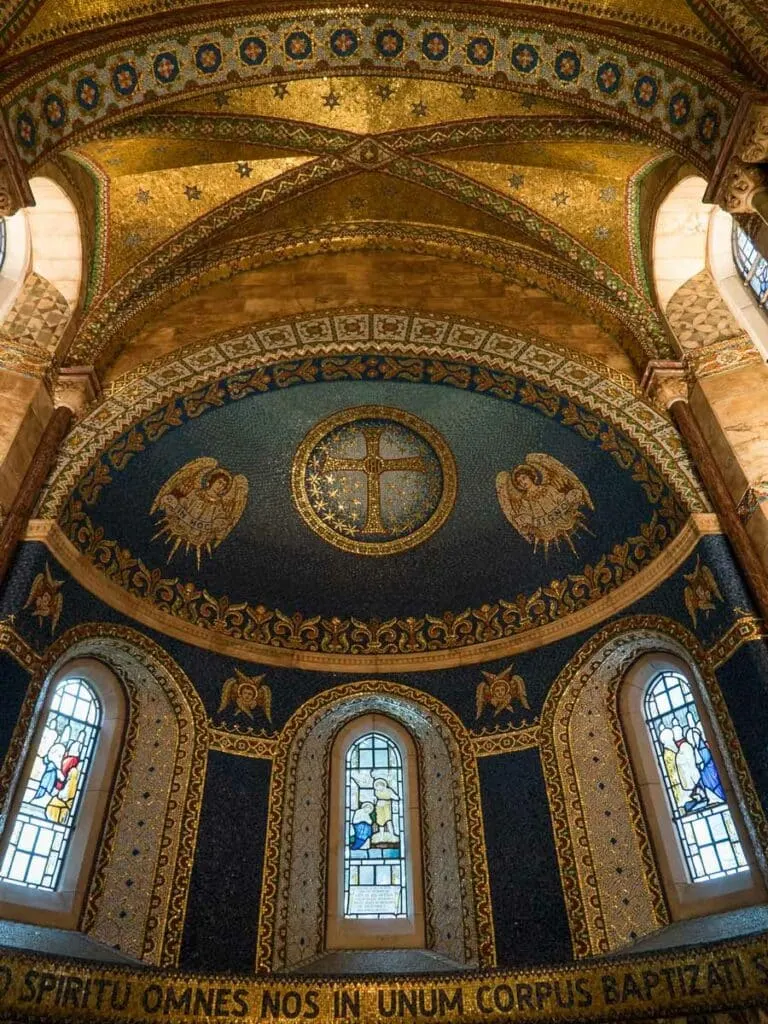
Although the chapel building wasn’t conceived until much later, the foundations for its existence began in 1755, when the Earl of Northumberland laid the foundation stone for the new three-acre site of the new Middlesex Hospital on Mortimer Street. The hospital’s central block opened in 1757 and would remain open for another 248 years.
Although the hospital underwent several additions over the next 140 years, adding new wings and sectors, the central courtyard remained underutilised, serving at different times as a garden, equipment and refuse store, and at one macabre point in time, a temporary mortuary.
Throughout the mid 19th Century, there was a growing recognition throughout the medical world that the fast-paced and often mentally draining environment of hospital wards and surgeries called for a place where people could disappear for quiet reflection, prayer and peace among the mayhem. However, there was no money, appetite, or perhaps both, among the hospital governors to meet the pastoral and spiritual needs of patients and staff.
Foundations of a New Chapel
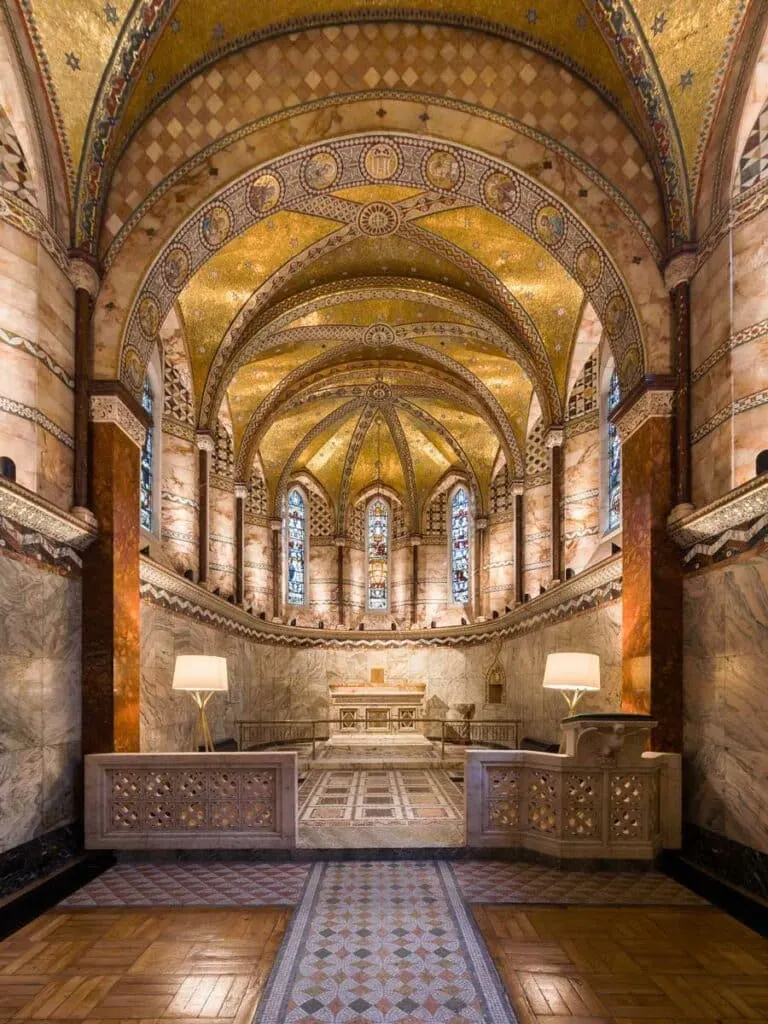
By the latter decades of the 19th Century, thoughts throughout Western Europe turned increasingly to well-being.
In the 1880s, Maximilian Bircher-Benner, a Swiss physician, began his pioneering research into nutrition. Meanwhile, the YMCA launched as one of the first wellness organisations, focusing on mind, spirit, and body health.
As the 1890s dawned, the Board of Governors keenly felt the absence of space within the confines of the Middlesex Hospital to nurture and provide for the tough times experienced by the hospital community.
Suggestions of a memorial to the late local MP, Major Ross, who had chaired weekly board meetings at the hospital for more than two decades, had been part of lengthy discussions. Approaches were made to friends of Ross, asking if they wished to contribute to a memorial fund in his memory and that such a memorial would take the form of a hospital chapel.
The board approached John Loughborough Pearson, one of the era’s best-renowned architects of churches and chapels, to design a building to suit their needs, fit the small plot of land, and “bring people to their knees.”
Pearson’s design indeed contained the wow factor, meeting the needs and providing an architectural masterpiece that comprised all of the most beautiful features of the Gothic revivalist design.
Construction began in 1891 after Pearson had spent months travelling Europe to gather materials and the best craftspeople capable of realising his vision.
A Lengthy Build
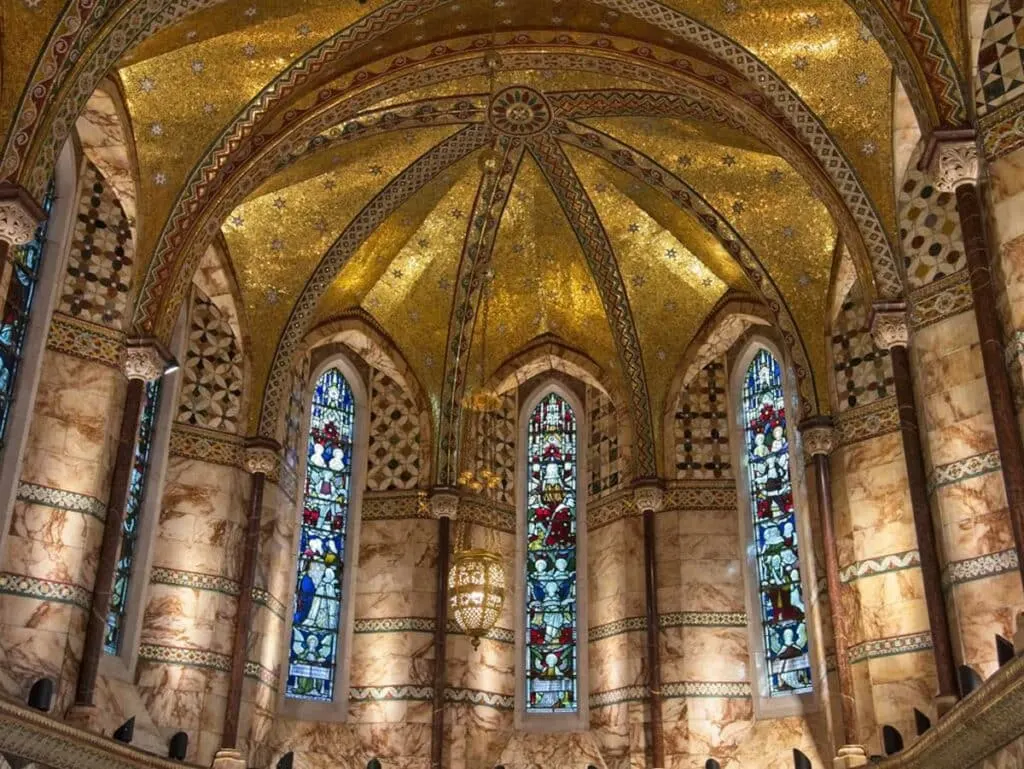
Anyone who’s ever had their house renovated, extended, or managed a construction project will be well aware of the risk of slippage and delays in the build. However, they would have to go some way to beat the length of time it took to complete the Fitzrovia Chapel after laying the first brick.
The chapel’s impressive shell and exterior were completed within a year of the foundations going down. It would take over 40 years of painstaking toil before the chapel was finished to fully open its doors and present the hospital community with its beautiful, bewildering oasis of calm.
Pearson died in 1897 and letters from his son, Frank, to the board of governors stated that he was determined to complete his father’s work. Piece by piece, the interior of the chapel took shape.
Artisans from mainland Europe installed wall panels, laid intricate floor mosaics, built the baptistry and designed the excellent stained glass that shone and cast colourful shadows throughout the building.
The work was time-consuming due to the vast expertise required and the detail that went into the design. Delays in funding contributed to the lengthy build time as monies were donated piecemeal, funding single features or specific items at a time.
There were long periods when no work took place in the chapel. But – a gothic triumph – the chapel was finally completed in 1935.
The Unconsecrated Chapel
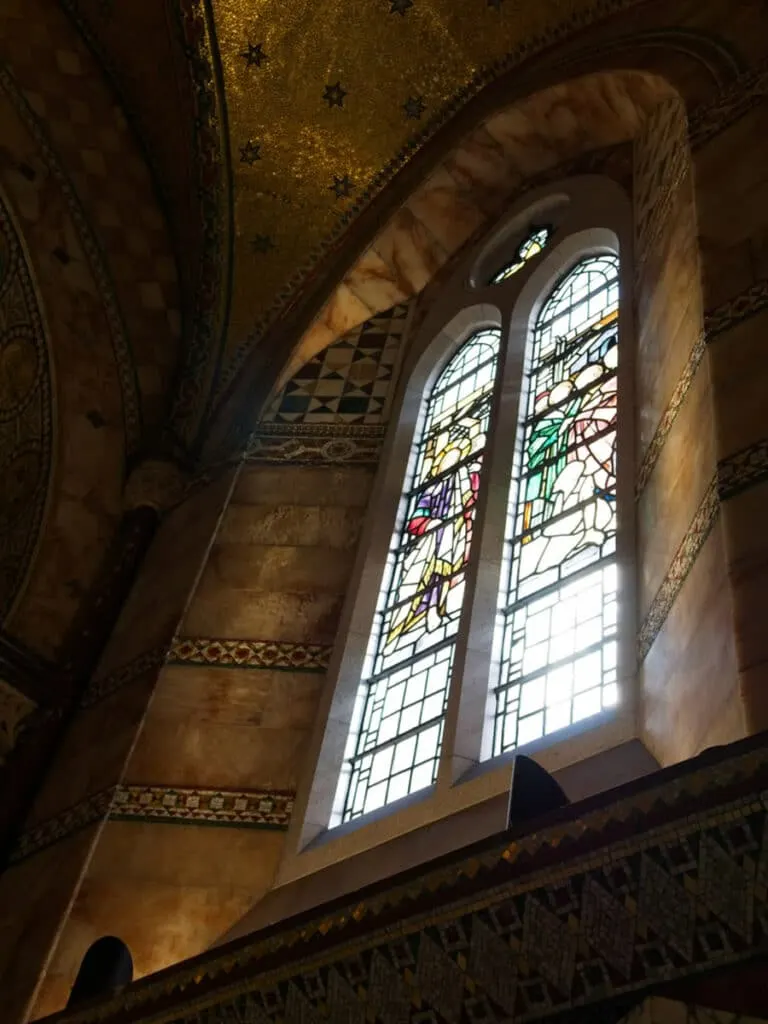
The opening service in the chapel took place on Christmas morning in 1891. From then on, it became a regular place of refuge for hospital staff, patients and their families, even as work continued on the spectacular interior.
Although the chapel received a blessing from a London bishop in the late 19th Century, the building was never consecrated by any Christian denomination, as is the case with all hospital chapels and other public chapels for contemplation.
The non-denominational existence of the chapel ensured it was open to people of all faiths. Indeed, at times, a rabbi worked alongside the hospital chaplain.
The Fitzrovia Chapel survived heavy bombing during World War II to serve the Middlesex Hospital community for 115 years before merging with nearby UCH.
At this point, the building was no longer required. As the hospital was demolished, the remarkable building emerged into the public consciousness for the first time.
Preservation and an Arts Space
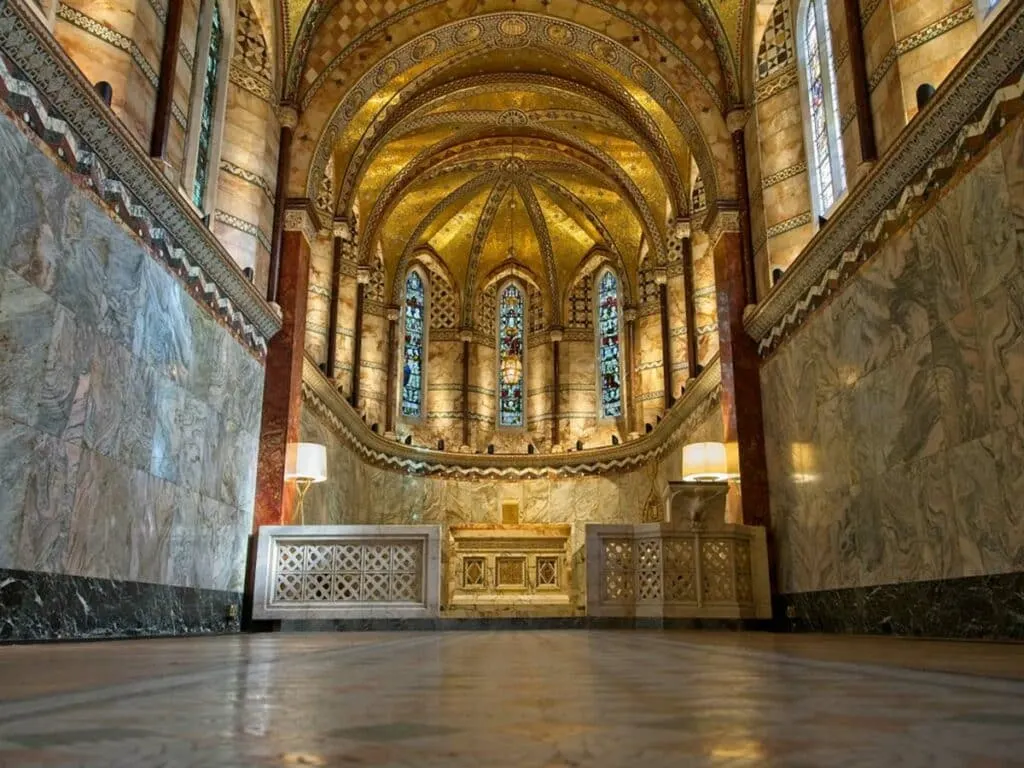
The NHS sold the land on which the Middlesex Hospital stood for development. It was agreed that the developer should contribute towards the building’s restoration and hand over ownership to a charitable foundation to see it serve the local community as a place for the arts.
Between 2013 and 2015 restoration took place, with repairs to sections of the mosaic ceiling and a new lighting system installed that uplights some of the chapel’s most incredible features.
The Fitzrovia Chapel Foundation now manages the chapel, and it is a secular chapel used for non-religious weddings, civil partnerships, baby namings and memorial services. It also serves as one of London’s most beautiful art exhibition spaces, hosting several outstanding displays since 2017.
Notable displays have included The Ward, which followed the lives of four young men on London’s first AIDS ward at the Middlesex Hospital, and Everybody was Furious, which focused on the former Fitzrovia resident Nina Hamnett.
Others include Portraits of NHS Heroes, which celebrated the nurses and NHS staff during the COVID-19 pandemic, and a photographic exhibition of nurses by American photographer Lee Miller during her travels across Europe during World War II.
Fitzrovia Chapel: Practical Information
Address: 2 Pearson Square, London, W1T 3BF
Opening Times: Every Wednesday, 11 am to 4 pm
Price: Free

